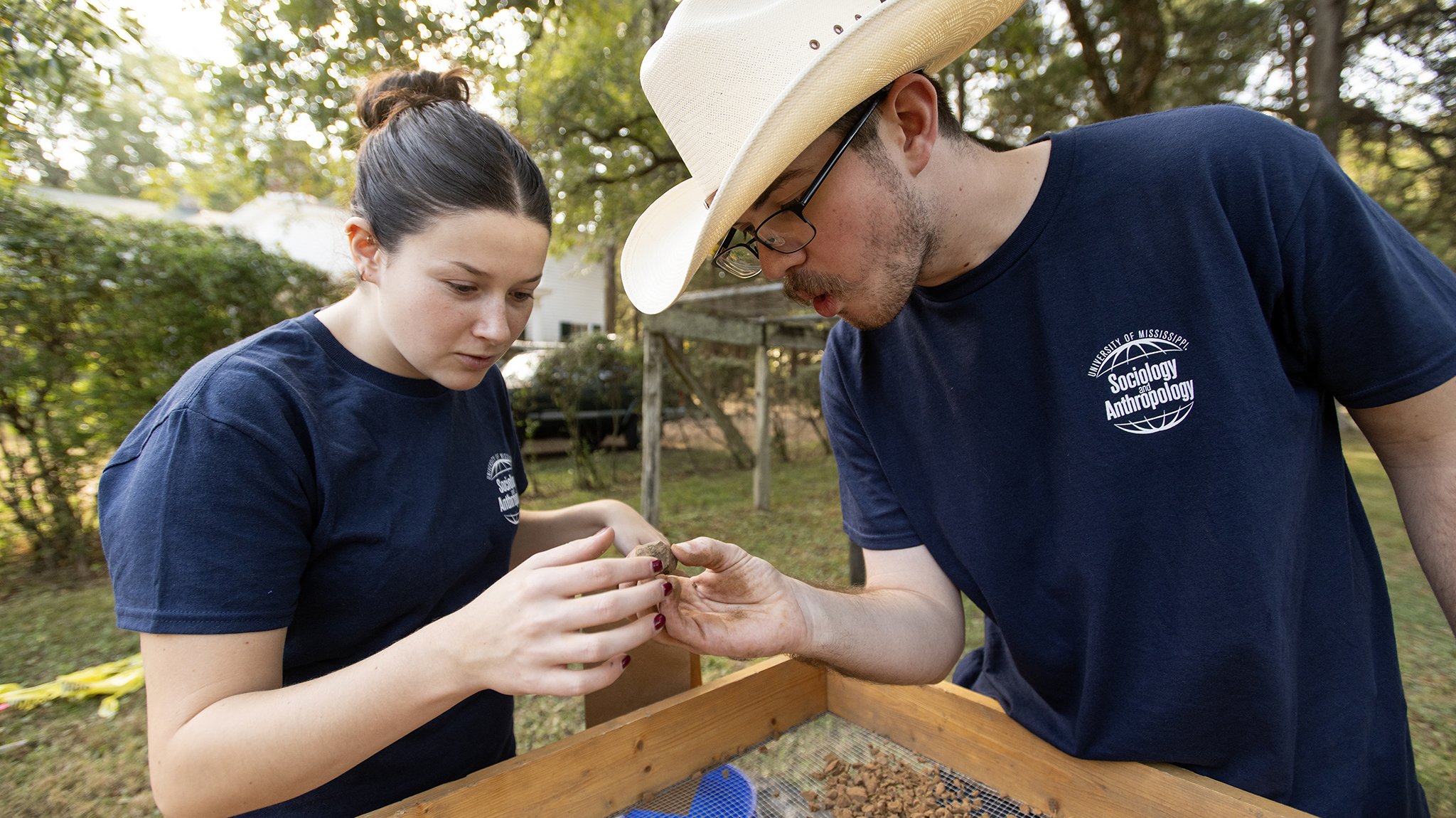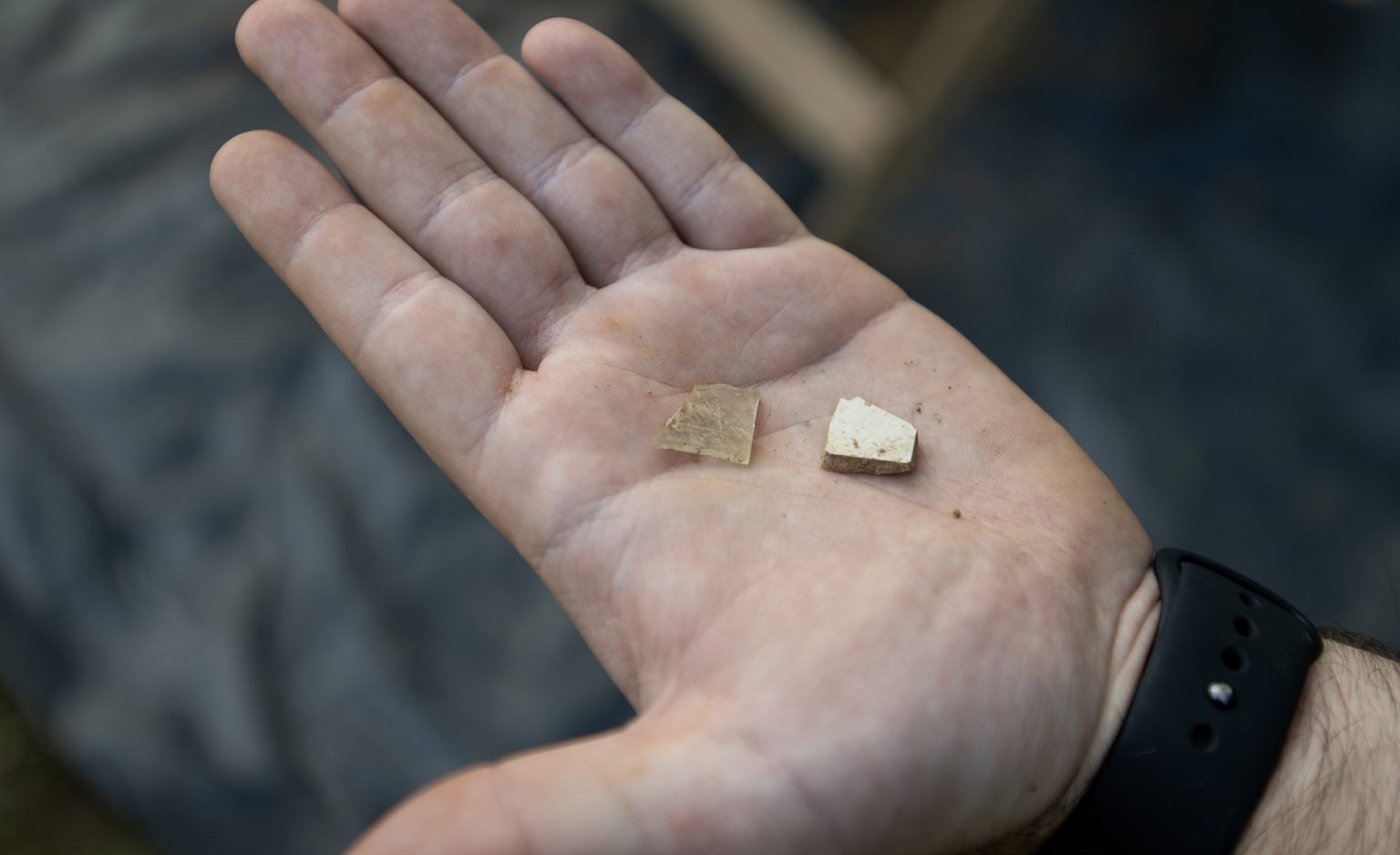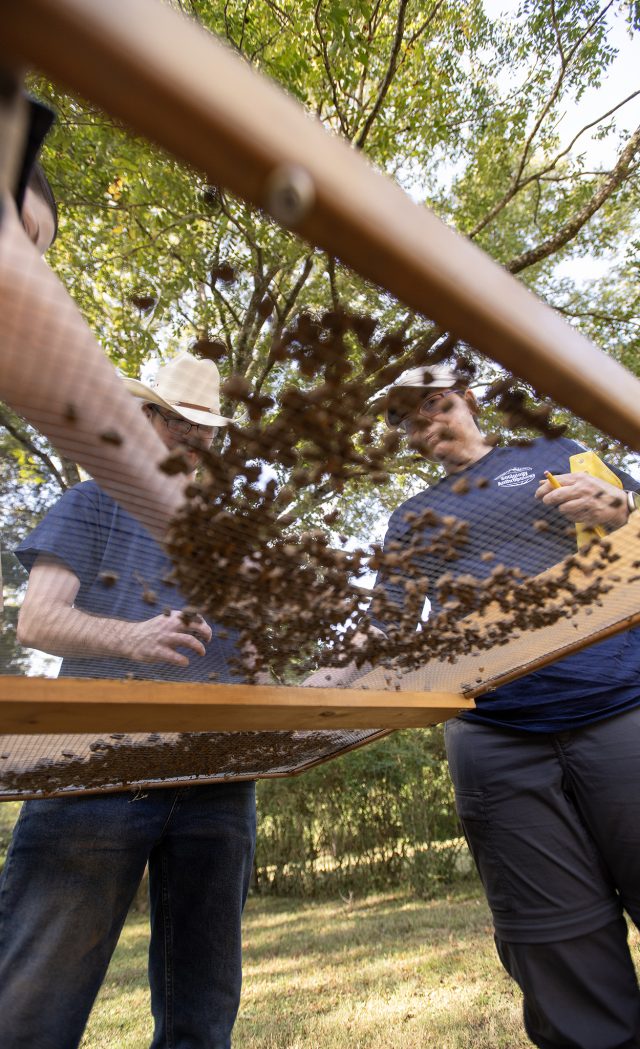Students aid in digging up antebellum history of Faulkner’s historic homestead

Tessa Cascio (left), a senior anthropology major from Gautier, and Wes Newton, a senior anthropology major from Guntown, inspect a possible artifact found at Rowan Oak as a part of their class’s public archaeology dig. The project is part of an effort to uncover the lives of enslaved peoples who lived and worked at the townhome in the antebellum period. Photo by Thomas Graning/Ole Miss Digital Imaging Services
OCTOBER 9, 2023 BY CLARA TURNAGE
The University of Mississippi Department of Sociology and Anthropology is partnering with Rowan Oak and the Oxford community to better understand the history of the property before it became William Faulkner’s home.
Students are excavating the property surrounding the Mississippi landmark site this fall, searching for evidence of the people who lived there in the antebellum era.

Students conducting an archaeological dig at Rowan Oak have found bits of glass, ceramic, nail and charcoal at the site. Photo by Thomas Graning/Ole Miss Digital Imaging Services
Community members can get involved in the research at the “Before Faulkner” Public Archaeology Day on Saturday (Oct. 14). Starting at 9 a.m., Ole Miss faculty and students will guide participants through the ongoing research and let them dig up some history of their own.
“A part of archaeology is sharing the information that we find with the public,” said Krista Eschbach, an archaeologist and visiting assistant professor of anthropology who is leading the research effort. “We want them to see the history here and the work that is going on at Rowan Oak.”
Eschbach will lead Public Archaeology Day and present her students’ findings. Her class, Anth 413: Public Archaeology, is researching the history of enslavement long before Faulkner when the property was owned by the Sheegog family between 1844 and 1872.
“The fact that this is a university property with three antebellum structures intact is incredible,” said Rachel Hudson, assistant curator of Rowan Oak. “We’re really wanting to interpret and understand the antebellum history here before it became Rowan Oak.”

Visiting professor Krista Eschbach (right) and Wes Newton, a senior anthropology major from Guntown, sift through dirt unearthed at Rowan Oak. Photo by Thomas Graning/Ole Miss Digital Imaging Services
Before it became the home of the famous author, the property at 916 Old Taylor Road belonged to Col. Robert Sheegog. An early settler of Oxford, Sheegog commissioned the construction of the home at the time the university was being built in the 1840s, Hudson said.
“A lot of the groundwork for this project started in 2016 with the emergence of the Slavery Research Group on campus, headed by Jeff Jackson,” Hudson said. “That led to them discovering census records from the university in which the original owner of the property, Robert Sheegog, had leased slaves from the university.
“So, we actually have evidence that there were at least nine enslaved people living and working at this property, which, back then, was the called ‘The Homeplace.’”
Behind the stately main house at Rowan Oak is a small brick structure that researchers believe housed enslaved people during the Sheegog period, Eschbach said. Eschbach’s class plans to excavate the structure as a part of their research.
“So much of our history is based on documents, but there are some people whose history is rarely recorded except in the material culture of their everyday lives,” Eschbach said. “The ultimate goal is to interpret the history of enslavement, not just as a condition, but as individual people and the context in which they lived.”
On Oct. 2, students from Eschbach’s class were in the field next to an oak barn that is also an antebellum structure, precise holes and placing the dirt in nearby containers. Every 10 centimeters, the students upended the container of earth onto a sifter to look for artifacts.
So far, the class has found nails, brick fragments, ceramic pieces, glass and charcoal, though the material must be analyzed in a laboratory setting before finalizing interpretations, said Brooke Eisenhuth, a junior anthropology major from Dickson, Tennessee.
“This part – being in the field and actually learning the proper way to do things – that’s what I like about this,” Eisenhuth said. “We’ve learned a lot about cultural resource management and the stipulations around that.
“This place is a cultural resource because of its importance to Faulkner, but we’re expanding on that to the time when other people owned this place.”
Wes Newton, a senior anthropology major from Guntown, said uncovering the history of the people who may not be in history books – such as enslaved people – is important.
“We want to be able to give a better representation of their life,” Newton said. “We need to shine a light on these people so they can get the respect they deserved in their lifetimes.”
